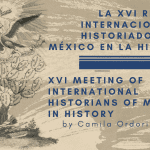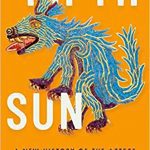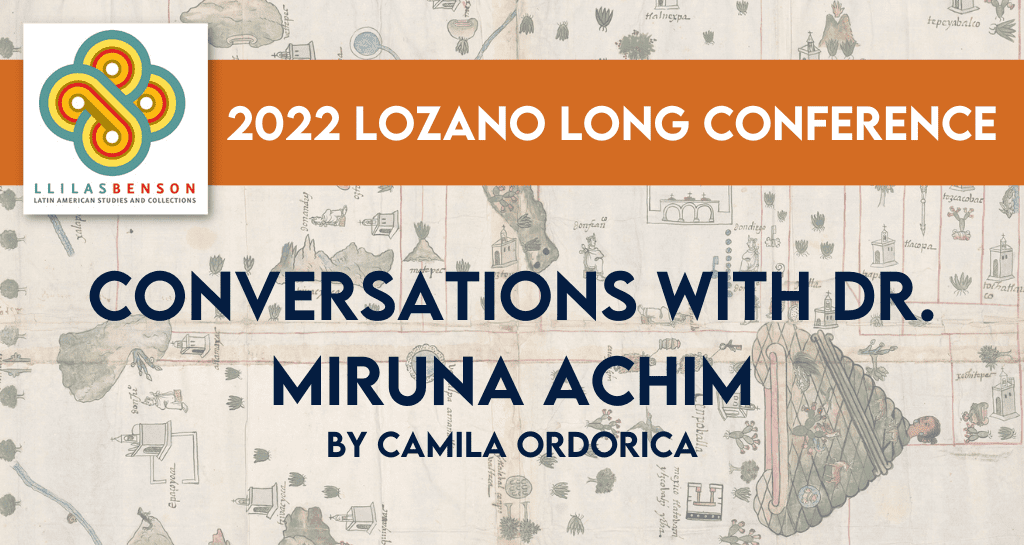
by Camila Ordorica
In honor of the centennial of the Nettie Lee Benson Latin American Collection, the 2022 Lozano Long Conference focuses on archives with Latin American perspectives in order to better visualize the ethical and political implications of archival practices globally. The conference was held in February 2022 and the videos of all the presentation will be available soon. Thinking archivally in a time of COVID-19 has also given us an unexpected opportunity to re-imagine the international academic conference. This Not Even Past publication joins those by other graduate students at the University of Texas at Austin. The series as a whole is designed to engage with the work of individual speakers as well as to present valuable resources that will supplement the conference’s recorded presentations. This new conference model, which will make online resources freely and permanently available, seeks to reach audiences beyond conference attendees in the hopes of decolonizing and democratizing access to the production of knowledge. The conference recordings and connected articles can be found here.
En el marco del homenaje al centenario de la Nettie Lee Benson Latin American Collection, la Conferencia Lozano Long 2022 propició un espacio de reflexión sobre archivos latinoamericanos desde un pensamiento latinoamericano con el propósito de entender y conocer las contribuciones de la región a las prácticas archivísticas globales, así como las responsabilidades éticas y políticas que esto implica. Pensar en términos de archivística en tiempos de COVID-19 también nos brindó la imprevista oportunidad de re-imaginar la forma en la que se llevan a cabo conferencias académicas internacionales. Como parte de esta propuesta, esta publicación de Not Even Past se junta a las otras de la serie escritas por estudiantes de posgrado en la Universidad de Texas en Austin. En ellas los estudiantes resaltan el trabajo de las y los panelistas invitados a la conferencia con el objetivo de socializar el material y así descolonizar y democratizar el acceso a la producción de conocimiento. La conferencia tuvo lugar en febrero de 2022 pero todas las presentaciones, así como las grabaciones de los paneles están archivados en YouTube de forma permanente y pronto estarán disponibles las traducciones al inglés y español respectivamente. Las grabaciones de la conferencia y los artículos relacionados se pueden encontrar aquí.
Dr. Miruna Achim will be one of the contributors to the 2022 Lozano Long Conference which will be held in honor of the centennial of the Nettie Lee Benson Latin American Collection. The conference, entitled “Archiving Objects of Knowledge with Latin American Perspectives”, will take place online on Thursday February 24 and Friday February 25 2022. The following is a presentation and overview of Dr. Achim’s work that was written in the hopes of bringing the reader closer to some of her ideas and key concepts in preparation for the conference.
I first met Dr. Miruna Achim this past March in Mexico City. In the months since, I have met with her a handful of times. Her research topic and mine overlap, and I was fortunate enough to be introduced to her by a professor through e-mail which is undeniably the platform where most academic meetings take place.[1] After a couple of exchanges, she said we could meet at the entrance of the Museum of Anthropology at 5pm, where she was going to be doing research. We can walk and talk, she told me. As historians, we often study how intellectual networks functioned in the past and much like our research subjects, we also create and embody them in the present. My conversations with Dr. Miruna Achim together with my readings of her work have helped me better understand how, in the sometimes strange world of academic sociability, not everything is—nor should it be—job market related. This short piece offers a picture of an ever-changing process of knowledge production through community building. When I first contacted Dr. Achim, I was only looking for some guidance with my research project, but through our conversations I have found that talking with the authors of the books we like and the ideas we respect humanizes and demystifies both the research process and the researcher.
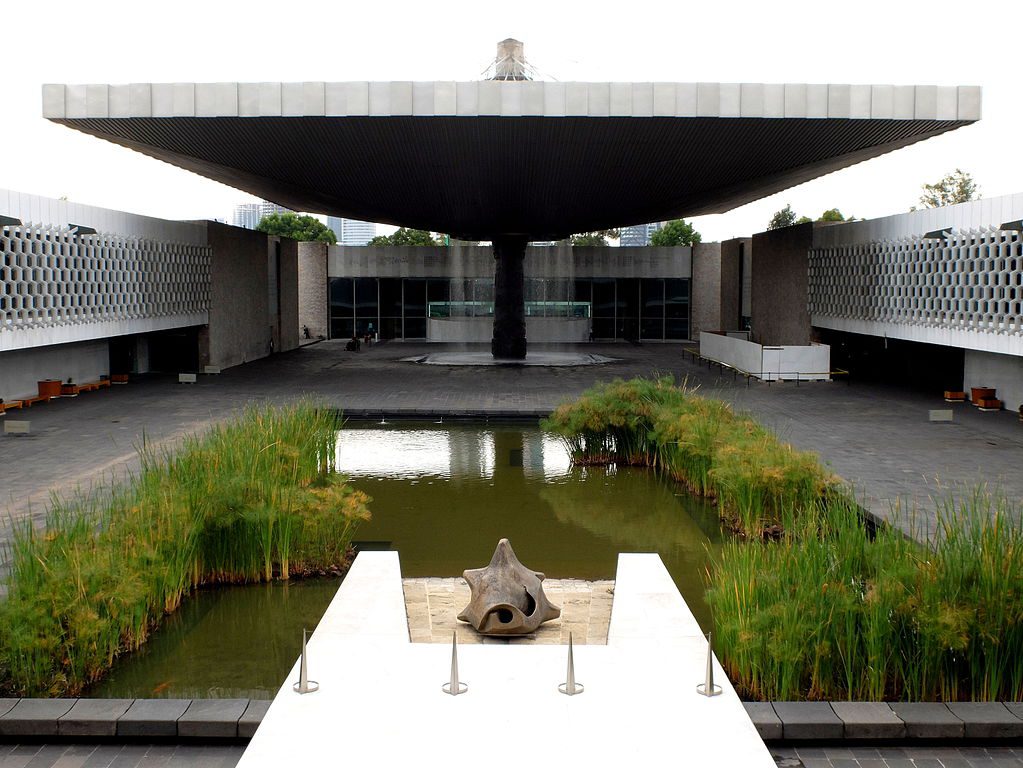
No object or person is ‘inherently’ anything, Dr. Achim told me over coffee a rainy afternoon of July, while kindly answering my most pressing question: how had she ended up in Mexico? Her response was honest. She only become interested in the Spanish-speaking world after having finished her bachelor’s and in the same way that most things happen, by chance. Born in communist Romania, she arrived at the United States by way of Austria, where she spent some time as a refugee. After having finished her bachelor’s degree at Harvard University in Art History, she met someone with Mexican heritage and became interested in the region, eventually enrolled in a Ph.D. program, traveled to Mexico City as the first stop in a research project that involved many cities in Latin America, and never left. Her dissertation entitled Fractured Visions. Theaters of Science in Baroque Mexico, became what she calls a “blueprint of her future research projects.”
Dr. Achim’s research focuses on the construction of objects—antiquities, scientific instruments, animals, climate, and minerals—into epistemic, aesthetic, and political categories by employing multi-scale analysis. Her research ranges from the sixteenth to the twentieth century and seeks connections between Global North, Global South, Western Europe, the Americas, and the Pacific. She is currently an Associate Professor of the Humanities Department at the Universidad Autónoma Metropolitana (UAM) Campus Cuajimalpa as well as a graduate teacher at the Institute for Philosophical Studies of the Universidad Nacional Autónoma de México (UNAM). There she teaches courses on cultural history of colonial science, and modern museums and collections. She has also been a Visiting Researcher at Cambridge University as well as a Visiting Professor at the École des Hautes Études-Paris.
While looking into Dr. Achim’s CV in preparation for this piece, it was striking to see the extent of listed collaborative works. It was also quite evident that Dr. Achim collaborates extensively with women, whom she calls her friends. She has edited and co-edited 7 volumes published both in Mexico and in the United States, in Spanish and in English, has written 20 contributions to edited volumes, and has published 11 journal articles. This next January 2022, the prestigious French journal Annales. Histoire. Sciences Sociales, will publish her co-authored articled with Stefanie Gänger (Universität Heidelberg) entitled “Pas encore classiques. The making of American antiquities.” The piece promises to call into question many assumptions that the discipline of archeology holds today. As told by Dr. Achim, the writing and editing process of this piece took 10 years. Her most recent collaborative book is entitled Museum Matters: Making and Unmaking of Mexico’s National Collection and was just published this past August 21. This publication is co-authored with Dr. Susan Deans-Smith (UT Austin) and Dr. Sandra Rozenta (UAM Cuajimalpa). In Museum Matters, the featured authors explore the histories of objects that have become part of the collection of the National Museum.
Dr. Achim has also written two monographs and is currently writing her third. Her first book Lagartijas medicinales: remedios americanos y debates ilustrados (Medicinal Lizards: American Remedies and Illustrated Debates) was published by Universidad Autónoma Metropolitana (UAM) and Conaculta in 2008. It presents the scientific debates that developed about the medicinal uses of a specific kind of lizard found in Guatemala and Chiapas in the eighteenth century said to cure ulcers and blisters in the skin and situates them in their context.[2] Her second book, From Idols to Antiquity: Forging the National Museum of Mexico (Nebraska University Press, 2017) delves into the history of the creation of the collections of the National Museum of Mexico—today’s Museum of Anthropology—in the early nineteenth century. By zooming in on the objects of the National Museum at this early time, Achim’s book shows the “evident profound crisis of meaning” behind the entire national project. Her current book project, The Breath of Green Stones: The Post-Conquest Lives of Meso-American Jade reconstructs the trajectories of Mesoamerican jade between the sixteenth and twentieth century as a remedy, mineral, archeological, and aesthetic object. In this research, Achim questions the meanings attributed to jade as well as how the Americas were collected, displayed, and imagined. While the broad questions Dr. Achim explores in her work are of similar nature, whether what changes is the object and its context.
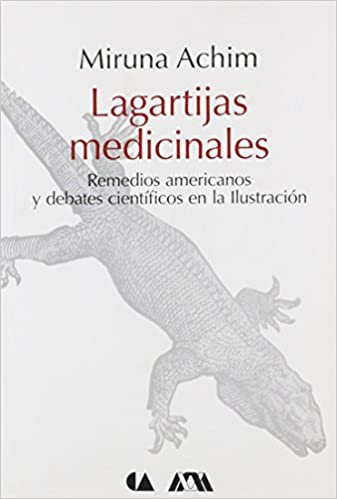
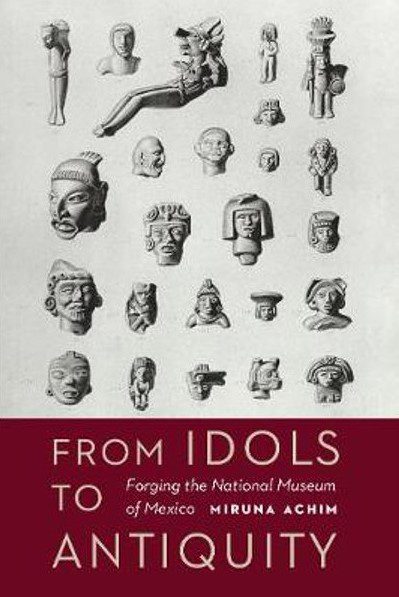

When I met Dr. Achim, I thought it would be a one-time chat with a professor that would perhaps be too busy for a graduate student. Fortunately, I was wrong. I have come to really value my small afternoon encounters with Dr. Achim beyond the professional dimension. We meet, I talk to her about my research on the history of the National Archive of Mexico, and she talks to me about collections, science, and jade, and points me to primary sources and bibliographic items that have been very useful. Over coffee or a walk, we have begun sharing things from our personal lives and have come to see some non-academic interests we share, like hiking. I may be getting ahead of myself, but I think there may be a friendship brewing. In any case, no doubt academic collaboration remains an important aspect of this relationship.
My conversations with Dr. Miruna Achim have allowed me to see an underappreciated dimension to the life of the mind. She has made it easier for me to appreciate how we need to creating lasting and meaningful bonds with the people who might potentially collaborate with us on mutually fulfilling projects down the line. Furthermore, we also need to recognize the emotional aspect of our research. Academic and intellectual work is not an individual endeavor, nor one that is devoid of emotions. It takes a village to go through a Ph.D. program and to follow an academic career thereafter—if we can even find a job, that is. Thus building professional networks and communities of care in the process is a practice that goes hand in hand. Sometimes, if you’re lucky, you can find both elements in the same person.
Perhaps this brief introduction might convince you to get acquainted with Dr. Achim. As previously mentioned, she will be one of our virtual contributors to the 2022 Lozano Long Conference in honor of the centennial of the Nettie Lee Benson Latin American Collection, entitled “Archiving Objects of Knowledge with Latin American Perspectives” at UT in February 23-24, 2022. The conference will be held in hybrid format, with pre-circulated papers and prerecorded presentations of the panels with live Q&A sessions. Dr. Achim’s panel, titled “Histories of Collecting and Collecting Stories,” aims to open an interdisciplinary dialogue on what it means to collect narratives in Latin America, highlighting diverse ways of understanding the creative processes behind the historical consolidation of archives, museums, and collections. As it turns out, her participation will take place in Austin, TX since she will also be presenting Museum Matters at the Institute for Historical Studies during the same dates.
[1] I extend my thanks to Dr. Jorge Cañizares-Esguerra for having rightfully recognized how Dr. Achim’s work and my own research interests intersect.
[2] Achim, Miruna. “Lagartijas medicinales. Remedios americanos y debates científicos en la ilustración.” Ciencias 97, no. 097 (August 18, 2010). http://www.revistas.unam.mx/index.php/cns/article/view/18031
The views and opinions expressed in this article or video are those of the individual author(s) or presenter(s) and do not necessarily reflect the policy or views of the editors at Not Even Past, the UT Department of History, the University of Texas at Austin, or the UT System Board of Regents. Not Even Past is an online public history magazine rather than a peer-reviewed academic journal. While we make efforts to ensure that factual information in articles was obtained from reliable sources, Not Even Past is not responsible for any errors or omissions.
